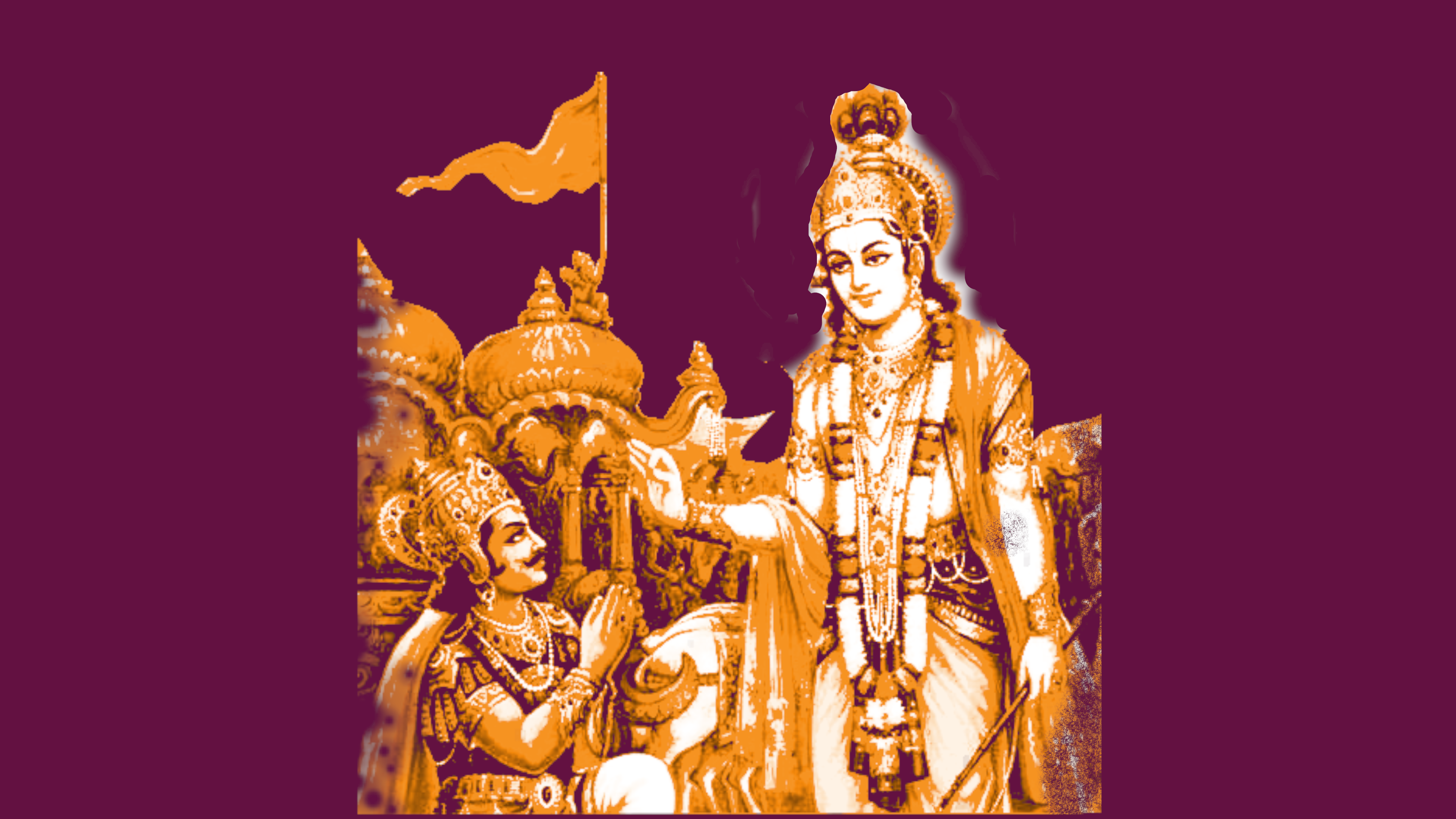Before the commencement of the Dharmyuddha in Kurukshetra when Arjuna, overwhelmed by his emotions, refused to fight with his kins, Lord Krishna revealed to him the timeless wisdom that we know as Bhagavad Gita.
By Sreejit Datta, Director of Civilisational Studies Practice & Resident Mentor at Rashtram.
गीताशास्त्रमिदं पुण्यं यः पठेत्प्रयतः पुमान्।
विष्णोः पदमवाप्नोति भयशोकादिवर्जितः॥
As has been said in this shloka from Adi Shankaracharya’s Bhagavad-Gita Mahatmya, the one with a steady mind, who devotedly recites the scripture of Bhagavad-Gita – the bestower of all virtue – shall attain a holy abode such as Vaikuntha, the residence of Lord Vishnu – a place that is free from all mundane qualities rooted in fear and grief. Geeta Jayanti, the yearly celebration of the day when the wisdom of the Bhagavad-Gita was first revealed to mankind, is celebrated on the Shukla Ekadashi tithi of the Margashirsha month in the Hindu calendar in veneration of Sri Krishna, Arjuna, and the timeless and non-sectarian wisdom that is communicated through their dialogue on the Kurukshetra battlefield.
The sacred tithi of Gita Jayanti marks this revelation by Bhagavan Sri Krishna to his friend and disciple Arjuna in the battlefield of Kurukshetra. Composed in the form of discourse as part of the larger itihasa text of the Mahabharata around at least five thousand years ago, the Bhagavad-Gita is chronicled in the third-person. In the Mahabharata, the dialogue between Sri Krishna – the Supreme Personality of Godhead and Sri Arjuna, is related by Sanjaya – the secretary of the Blind Kuru King Dhritarashtra. Sanjaya witnessed the war taking place in Kurukshetra through divya-drishti or divine sight. The annual celebration of the date of composition of the Bhagavad-Gita and its first recital is therefore reliant upon the oral tradition of itihasa-purana. The Itihasa-purana tradition deems a story to be itihasa or ‘history’ only when the bard or the teller of the tale is a witness to the actual events described in the story.
On the tithi of Gita Jayanti Samaroha, devotees and pilgrims gather in the hallowed land of Kurukshetra in today’s Indian state of Haryana, and they perform various rituals including a purificatory bath in the Sannihit Sarovar and Brahma Sarovar. Kurukshetra is the very place where the Dharmayuddha of Mahabharata is believed to have been fought and it is where the wisdom of the Bhagavad-Gita was revealed for the first time. The call to dharma as expressed in the Bhagavad-Gita remains a source of fathomless inspiration and courage for generations of spiritual philosophers and freedom fighters alike, such as Swami Vivekananda and Sri Aurobindo. These luminaries did not ignorantly conflate the Hindu creed of ahimsa with absolute dharma and therefore, instead of marking the scripture as a “gospel of terrorism”, they were able to interpret the Bhagavad-Gita to be determining perfect action. Gita Jayanti is the day to realise and remember this crucial aspect about the emancipating gospel of truth that is the Bhagavad-Gita. Perhaps the most succinct description of Gitakara Bhagavan Sri Krishna as well as of the Bhagavad-Gita has been given by Adi Shankaracharya in the following verse of the Bhagavad-Gita Mahatmya:
सर्वोपनिषदो गावो दोग्धा गोपालनन्दनः।
पार्थो वत्सः सुधीर्भोक्ता दुग्धं गीतामृतं महत्॥
“Comparing all the Upanishads as a cow, Krishna the son of the cowherd chief is the milkman, Arjuna the son of Pritha is the calf, and the intelligent people are the enjoyers of the great nectar of Bhagavad gita as the milk.”

